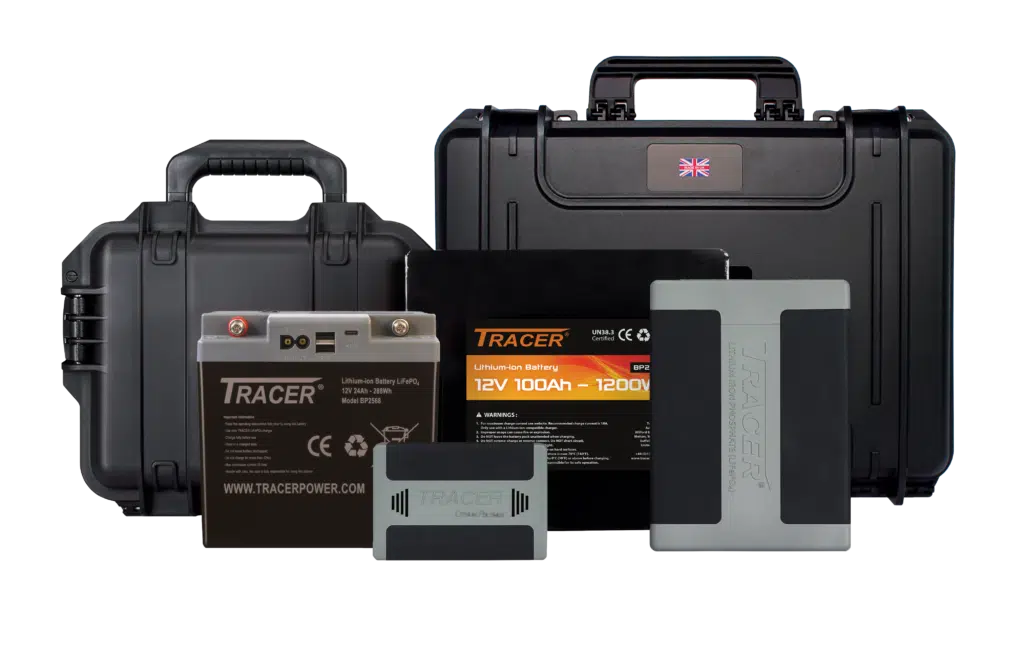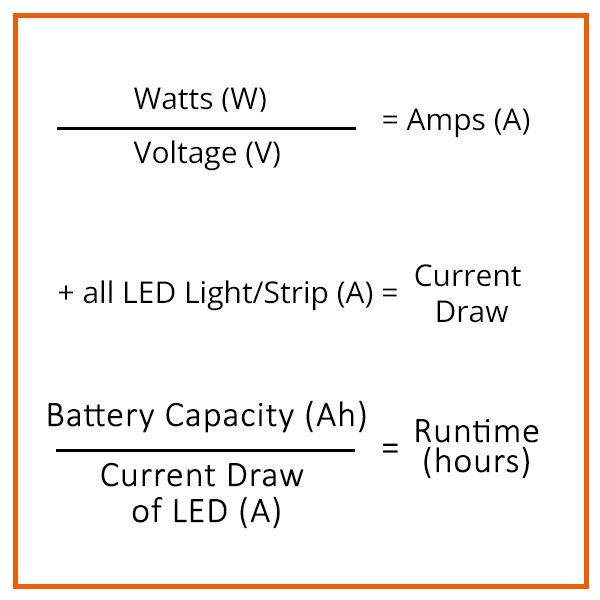Powering Lights with Lithium Polymer (LiPo), Lithium-Ion (Li-Ion) or Lithium Iron Phosphate (LiFePO4)?
Lithium Polymer (LiPo): LiPo batteries have a higher energy density, meaning they can store more energy in a smaller and lighter package. This makes them suitable for applications where weight and size are critical factors.
Lithium Iron Phosphate (LiFePO4): LiFePO4 batteries have a lower energy density compared to LiPo batteries but they compensate with an increased charge cycle life. LiFePO4 can be charged and discharged 4x more then LiPo making them more cost effective over a longer period of time.
LiFePO4 also have a flatter discharge curve meaning they will deliver a more consistent voltage supply, resulting in more stable and constant brightness. As a result, the LED lights will remain brighter for a more extended period before the battery’s voltage drops significantly enough to affect their performance.
Lithium-Ion (Li-Ion) sits in the middle for most characteristics when comparing it with LiPo & LiFePO4. Lightweight compared to LiFePO4 and an increase in charge cycles compared to LiPo. Tracer supplies these in Module/Carry Case Kit formats. ranging from 12V 50Ah-150Ah.
Tracer Powers range of high performance batteries is available in:
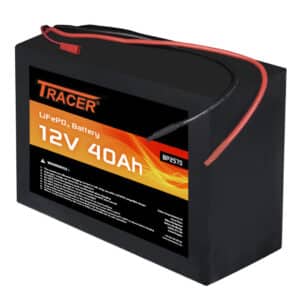 Tracer 12V 40Ah LiFePO4 Battery Module
Tracer 12V 40Ah LiFePO4 Battery Module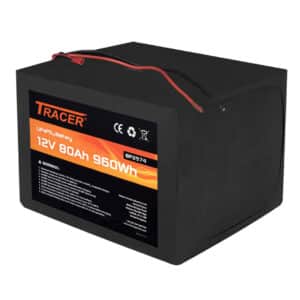 Tracer 12V 80Ah LiFePO4 Battery Module
Tracer 12V 80Ah LiFePO4 Battery Module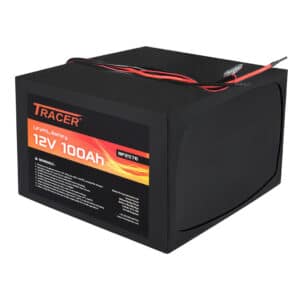 Tracer 12V 100Ah LiFePO4 Battery Module
Tracer 12V 100Ah LiFePO4 Battery Module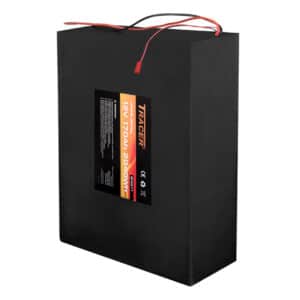 Tracer 12V 170Ah LiFePO4 Battery Module
Tracer 12V 170Ah LiFePO4 Battery Module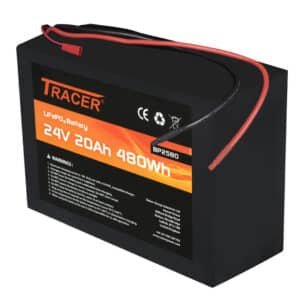 Tracer 24V 20Ah LiFePO4 Battery Module
Tracer 24V 20Ah LiFePO4 Battery Module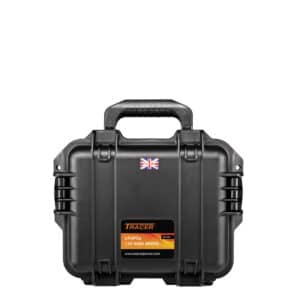 Tracer 12V 40Ah LiFePO4 Carry Case Kit
Tracer 12V 40Ah LiFePO4 Carry Case Kit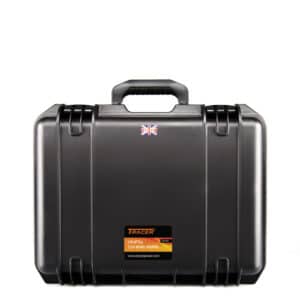 Tracer 12V 80Ah LiFePO4 Carry Case Kit
Tracer 12V 80Ah LiFePO4 Carry Case Kit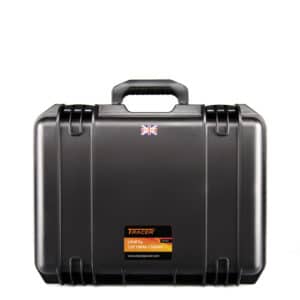 Tracer 12V 100Ah LiFePO4 Carry Case Kit
Tracer 12V 100Ah LiFePO4 Carry Case Kit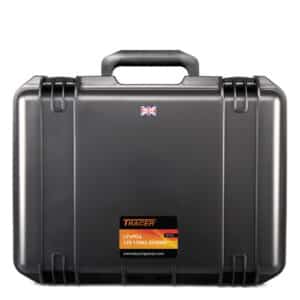 Tracer 12V 170Ah LiFePO4 Carry Case Kit
Tracer 12V 170Ah LiFePO4 Carry Case Kit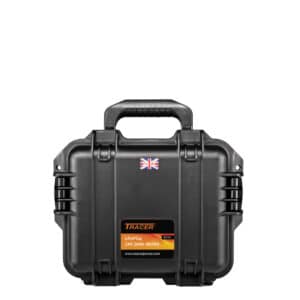 Tracer 24V 20Ah LiFePO4 Carry Case Kit
Tracer 24V 20Ah LiFePO4 Carry Case Kit
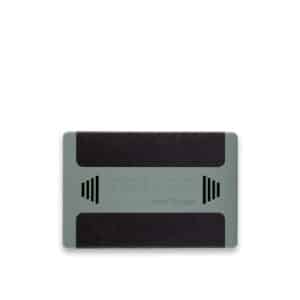 Tracer 12V 4Ah Lithium Polymer Battery Pack
Tracer 12V 4Ah Lithium Polymer Battery Pack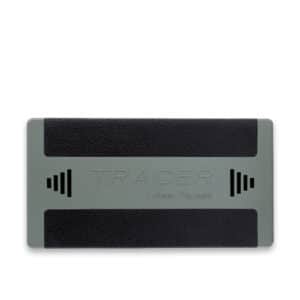 Tracer 12V 8Ah Lithium Polymer Battery Pack
Tracer 12V 8Ah Lithium Polymer Battery Pack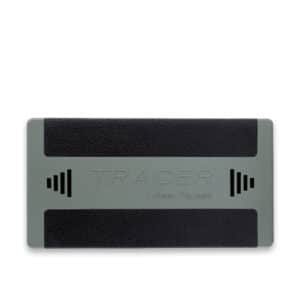 Tracer 12V 10Ah Lithium Polymer Battery Pack
Tracer 12V 10Ah Lithium Polymer Battery Pack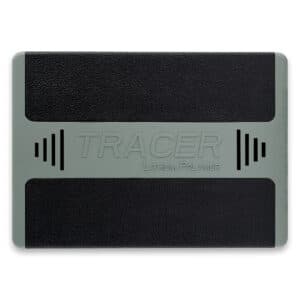 Tracer 12V 14Ah Lithium Polymer Battery Pack
Tracer 12V 14Ah Lithium Polymer Battery Pack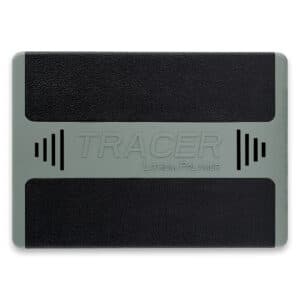 Tracer 12V 22Ah Lithium Polymer Battery Pack
Tracer 12V 22Ah Lithium Polymer Battery Pack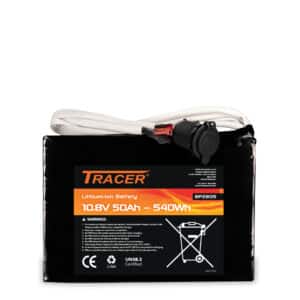 Tracer 12V 50Ah Lithium-Ion Battery Module
Tracer 12V 50Ah Lithium-Ion Battery Module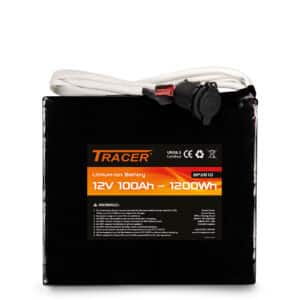 Tracer 12V 100Ah Lithium-Ion Battery Module
Tracer 12V 100Ah Lithium-Ion Battery Module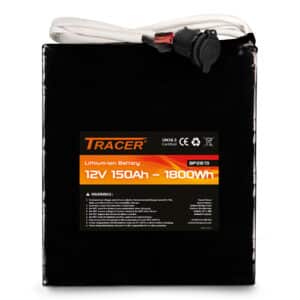 Tracer 12V 150Ah Lithium-Ion Battery Module
Tracer 12V 150Ah Lithium-Ion Battery Module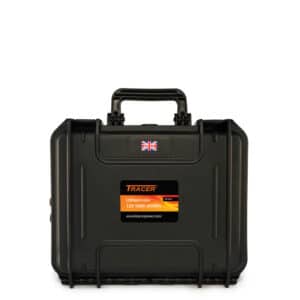 Tracer 12V 50Ah Lithium-Ion Carry Case Kit
Tracer 12V 50Ah Lithium-Ion Carry Case Kit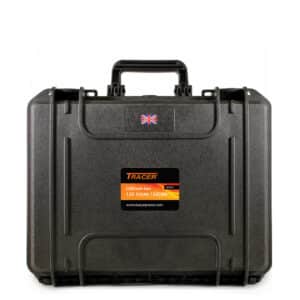 Tracer 12V 100Ah Lithium-Ion Carry Case Kit
Tracer 12V 100Ah Lithium-Ion Carry Case Kit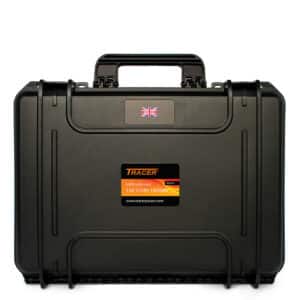 Tracer 12V 150Ah Lithium-Ion Carry Case Kit
Tracer 12V 150Ah Lithium-Ion Carry Case Kit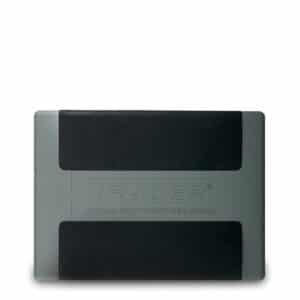 Tracer 12V 7Ah LiFePO4 Battery Pack
Tracer 12V 7Ah LiFePO4 Battery Pack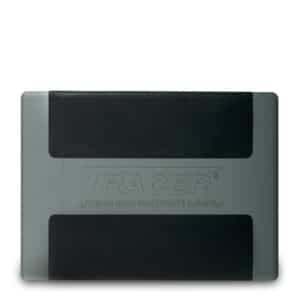 Tracer 12V 16Ah LiFePO4 Battery Pack
Tracer 12V 16Ah LiFePO4 Battery Pack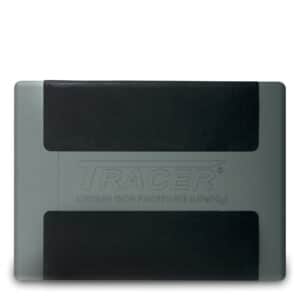 Tracer 12V 24Ah LiFePO4 Battery Pack
Tracer 12V 24Ah LiFePO4 Battery Pack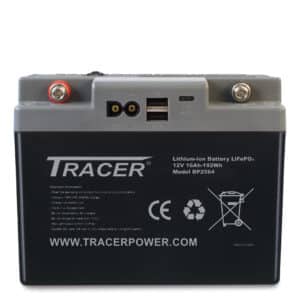 Tracer 12V 16Ah LiFePO4 Battery Pack with Grab Handle
Tracer 12V 16Ah LiFePO4 Battery Pack with Grab Handle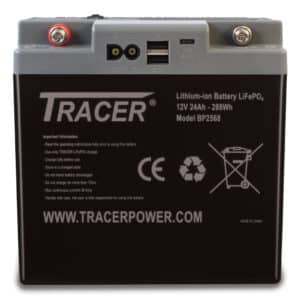 Tracer 12V 24Ah LiFePO4 Battery Pack with Grab Handle
Tracer 12V 24Ah LiFePO4 Battery Pack with Grab Handle Tracer 24V 8Ah LiFePO4 Battery Pack with Grab Handle
Tracer 24V 8Ah LiFePO4 Battery Pack with Grab Handle

